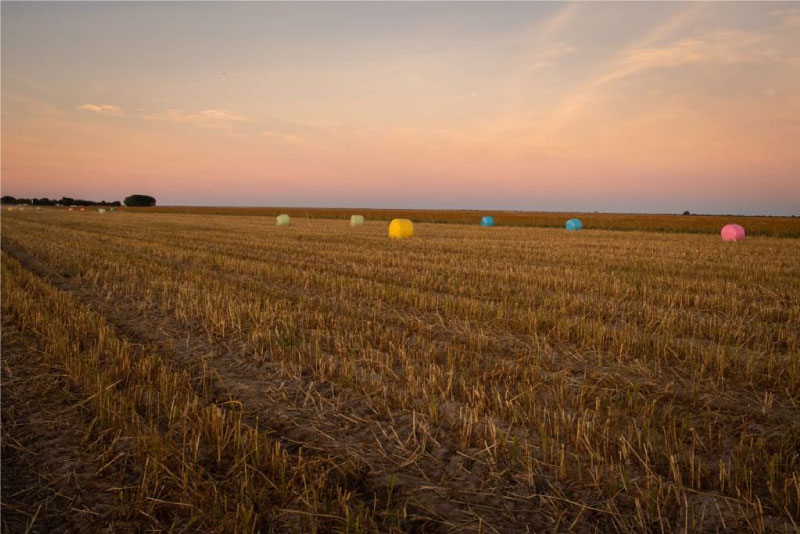
What are the advantages of black agricultural stretch film compared to white or green?

In our webinar “Exploring the depths of agricultural stretch film!” the question arose about the advantages of different colors of stretch film. Gregor Kruppa, Key Account Manager of Aspla’s agricultural stretch film division, which covers the northern, central, and eastern European regions, and one of the webinar speakers, answers this question, which we transcribe in this post.
About 30 – 35 years ago, all bales were uniformly colored. The color was taken over from the traditional silo colour, which was “black.” “As far as I know, the stretch film was developed in England in collaboration with an Australian Farmer.”
In England, almost all bales remain consistently colored to this day. In Spain, coastal areas also follow this practice.
Different aspects to consider related to colours in agricultural stretch films:
Basically, all colors can be used relatively interchangeably nowadays, considering high-quality agricultural stretch film. Since Aspla, a renowned manufacturer, has been optimising formulations for over 30 years, we have adjusted formulations to accommodate various colors. However, not all manufacturers maintain this level of precision.
In general, white films dominate the market today, but there are also green films in different shades and black films. Scientific research indicates that heating caused by solar radiation is lower with white and light colours than with dark ones. However, this effect is significantly weakened inside the bale at a depth of 3-4 cm.
A high film temperature temporarily increases gas permeability and the strength of the film material, but only during sunlight exposure. For this period, white film has advantages over black films. Nevertheless, the study highlights that black film is “preferred” due to its better environmental compatibility (lower contaminant content) and visual inconspicuousness.
Black film contains a Carbon Black masterbatch, which is completely organic and naturally stable against UV radiation. White film is based on TiO2, and green color relies on CrO, which, from an ecological perspective, is “slightly less favourable.”
Additionally, black film is significantly more opaque, which counteracts the greenhouse effect by better blocking IR radiation. However, the film itself absorbs slightly more warmth.
Different agricultural stretch film colors:
Some recommendations for choosing the best color:
In mid-summer temperatures with direct sunlight and without wind or shade protection options (typical continental weather), lighter colors are advisable due to their technical advantages.
However, in conditions that allow material cooling (e.g., wind), assuming direct sunlight, darker or black colors are sufficient and suitable.
We recommend considering a minimum of 6 layers, although more layers always provide better protection. Please watch our video explaining why technical standards and quality control tests are crucial in agricultural film manufacturing.
Colors can also be used for visual advantage to adapt to the landscape’s camouflage effect or as a deterrent against animal attacks, such as bird attacks.
As mentioned in the webinar, the contrast effect treatment for animals plays a significant role.
Birds instinctively search for worms (food). A bright background is more visible to them than a darker one. In our case, we are referring to the grass on white or light green bales. The bird perceives the grass as a worm in this scenario.
This perception can also occur if a white or light green bale is packed transparently, especially if there is moisture in the bale (e.g., condensation), enhancing the contrast of the grass on the surface (birds may damage the plastic with their beaks).
Black or very dark-colored bales provide better protection against bird attacks compared to bright colors.
For further details about agricultural stretch films, please watch our webinar with Lesya Rebrova and Gregor Kruppa.





![[eBook] Sustainability and water management](https://agriplasticscommunity.com/wp-content/uploads/8_550x310_ENG-440x264.png)
![[eBook Trends in Agriculture Plastics] Increasing use of biodegradable mulch](https://agriplasticscommunity.com/wp-content/uploads/550 × 310_2_ENG-440x264.png)
![[eBook Trends in Agriculture Plastics] Reducing the plastic used in the manufacture of agricultural films](https://agriplasticscommunity.com/wp-content/uploads/550 × 310_1_ENG-150x150.png)





















